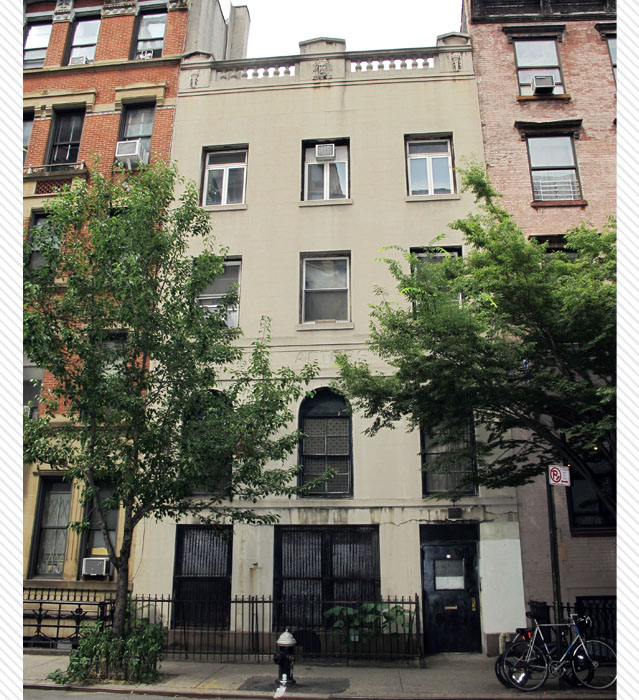31 East 7th Street | Block : 463 | Lot #42
Description & Building Alterations
Tax records indicate that this four story building was erected between 1848 and 1850. The Hebrew Actors’ Union Building is an enduring reminder of one of the most important cultural institutions of New York City’s Jewish community in the early 20th century – the Yiddish theater. By the turn of the 20th century, New York was established as the world’s center for Yiddish theater, which had become an integral part of Jewish cultural life on the Lower East Side of Manhattan. The Hebrew Actors’ Union (HAU) was founded in 1899, making it the first theatrical union created in the United States, predating the renowned Actors’ Equality Association by more than two decades. With a peak membership of about 400 members in 1927, the HAU was the organizing force behind some dozen Yiddish theaters in New York and other major cities.
Although this building dates to the 19th century, the current character and appearance of the building result from alterations undertaken in 1923, when the union moved into the building. Victor Mayper, a prolific New York architect and engineer, designed these alterations that included changing a ground floor window to create an additional front entrance and adding an extra 18 feet to the rear of the building. Mayper, who practiced International Style Modernism, gave the building its stark, white facade with neoclassical details, and a balustrades parapet. The carved inscription “Hebrew Actors’ Union” incised just beneath the cornice was apartment also acquired around this time. The HAU officially disbanded in 2005, but the organization still holds ownership of the Hebrew Actors’ Union Building, which is presently a repository of old photographs and files, and is occasionally used as a meeting space. The New York YIVO Institute for Jewish Research restored the materials with a grant from the Los Angeles philanthropist Eli Broad.
More +Close -

Block : 463 / Lot : 042 / Building Date : 1848-50/1923 alt. / Original Owner : Chatfield Smith (1848), Hebrew Actors’ Union (1923) / Original Use : Residential (1848), Institutional (1923)/ Original Architect : Unknown (1848), Victor Mayper (1923)


Do you know this building? Please share your own stories or photos of this building here!